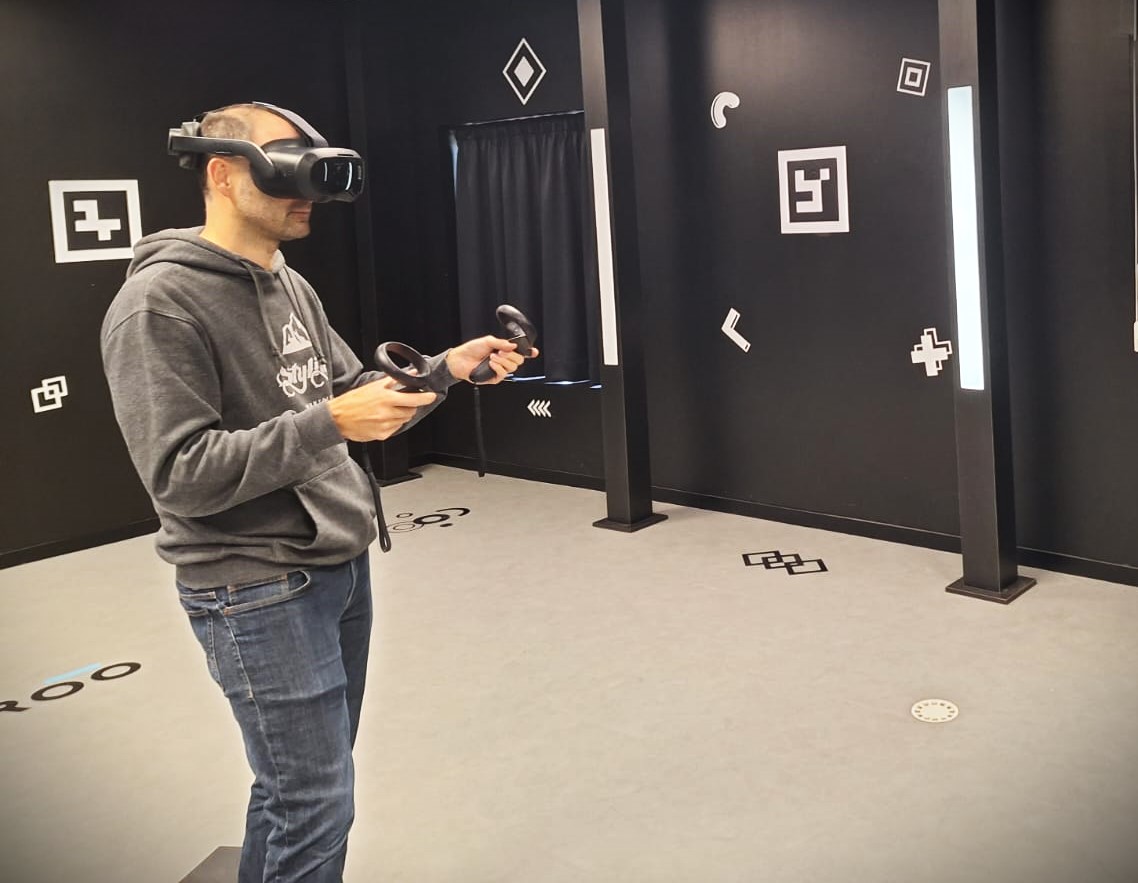In 2024: Better tools for VIROO content creators
Bilbao, Spain, January 31, 2024.- VIROO is our pioneering VR as a Service (VRaaS) platform, designed to simplify and accelerate VR adoption among companies and institutions of all sizes and sectors. Our team never stops pushing the boundaries, embracing emerging technologies, and remaining agile to provide our clients with an unrivaled experience.
Up to this point, we have been working on the creation of an excellent platform, a must to build industrial grade multi-user immersive experiences. Emphasizing the improvement of UX in our VIROO runtime players and abstracting the complexity involved in such systems has been our objective. VIROO Room Player, tracking in free roam multiuser XR systems combined with remote VIROO Single Players, and VIROO CAVE Players are good proof of this.
In addition, VIROO leverages the ability to wirelessly stream content rendered on powerful graphics workstations to headsets, eliminating the need for backpacks. This is a significant improvement in terms of user comfort and the elimination of the power limitations of portable hardware. We use Wifi 6E networks, the most advanced transmission technology available today commercially worldwide.
VIROO is at the forefront of state-of-the-art tracking technology. We’ve adapted the system to use HTC’s Enterprise services including Vive Business+, which includes features such as eliminating/preventing drift using ARUCO markers, managing devices in the cloud, and coordinating deployment of configurations across fleets of devices.
As a CLOUD platform, VIROO uses a highly modular container architecture hosted on AWS. It takes advantage of scalable services, load balancing, latency optimization by geographical area, security best practices, and more.
The system is designed to support a much higher user load than currently exists. We want to ensure an optimal quality of service for our customers.

“In 2024, our focus will be on improving the user experience of VIROO Studio within Unity and adding new features to further facilitate the adoption of the VIROO platform for multi-user XR content creation” .
Sergio Barrera, CTO at Virtualware.

2024 Roadmap: Focus on VIROO Studio
Some of the key improvements are:
1. Executable project publishing: This feature will allow users to take full advantage of Unity’s multi-platform potential, enabling the creation of VIROO content on all-in-one XR headsets. It also extends the supported hardware list. In addition, this will indirectly make it easier to integrate assets from third parties that are purchased from the Unity Asset Store.
2. Allowing the selection of a render pipeline: We are working hard to allow content creators to choose which render pipeline they want to work with, removing barriers to the type of assets that can be used in VIROO projects.
3. Integrating with Unity’s Visual Scripting: This enables users without programming knowledge to create VIROO scenes with greater logical depth. We will publish a set of examples that can also be used as templates by our content creators to ease the learning curve.
Expected Technology Adoption
When it comes to adopting new technologies, our flexibility in implementing them will allow us to continue to update the emerging technologies in the market.
This includes communication-based on new chipsets supporting Wifi 7, which headset manufacturers are already working on. They also include the new capabilities of integrated graphics chipsets, which promise almost double the current performance, and of course, the new 8K resolutions, which seem to be the standard for the next generation of headsets.
The ability to publish VIROO content as runtime on other platforms will allow us to add to our ecosystem of supported devices, the new Apple Vision Pro, as well as other emerging Android-based stand-alone devices like the new generations of Meta, Pico, HTC, Lenovo, etc.
Our R&D department is working on integrating an AI-based system into VIROO, allowing content creators to use specialized LLMs (e.g. ChatGPT) fed with concrete and specific knowledge in the target field of training. This approach will make it possible to use AI to obtain sophisticated and natural answers while limiting the scope of knowledge and ensuring certainty.
We believe this feature will be very beneficial in training environments. It will allow the creation of intelligent virtual assistants to guide end users through their learning processes.

